The Development of the Tourism Sector in Eastern Asia: An Analysis
VerifiedAdded on 2023/05/27
|5
|889
|458
Essay
AI Summary
This essay provides an overview of the tourism sector's development in Eastern Asia. It highlights the economic importance of tourism, driven by factors like intraregional travel, socio-economic conditions, and historical aspects. The essay discusses the benefits, such as income generation and employment, but also acknowledges shortcomings like resource overexploitation and uneven distribution of benefits. It explores how governments and organizations view tourism as a tool for development, poverty eradication, and community empowerment. Furthermore, the essay addresses the criticisms of tourism's impact, the integration of political relations in the analysis, and the importance of cross-border and domestic tourism. It concludes by emphasizing the role of economic growth and government policies in the continued development of tourism in the region, while also pointing out the neglect of health issues associated with tourism.
1 out of 5
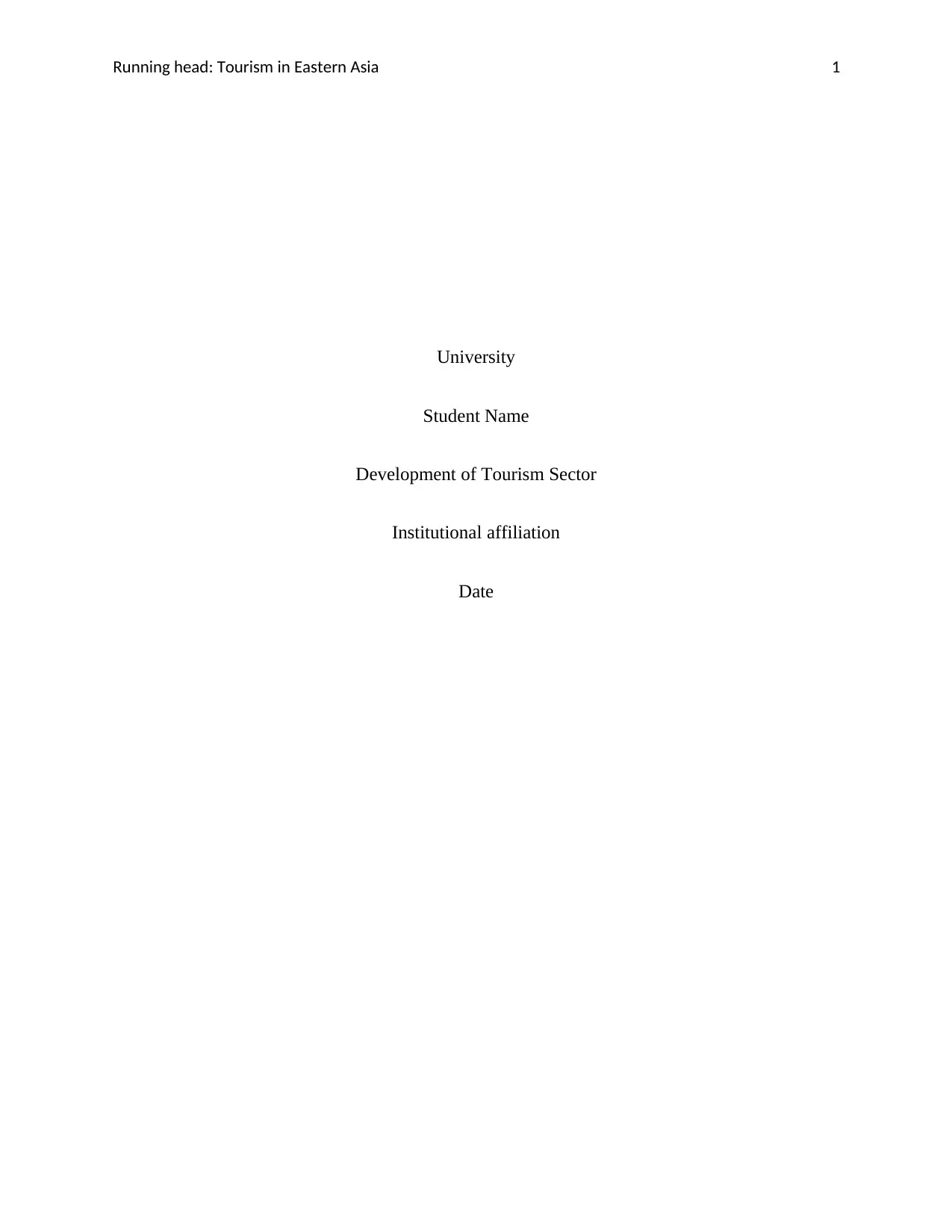
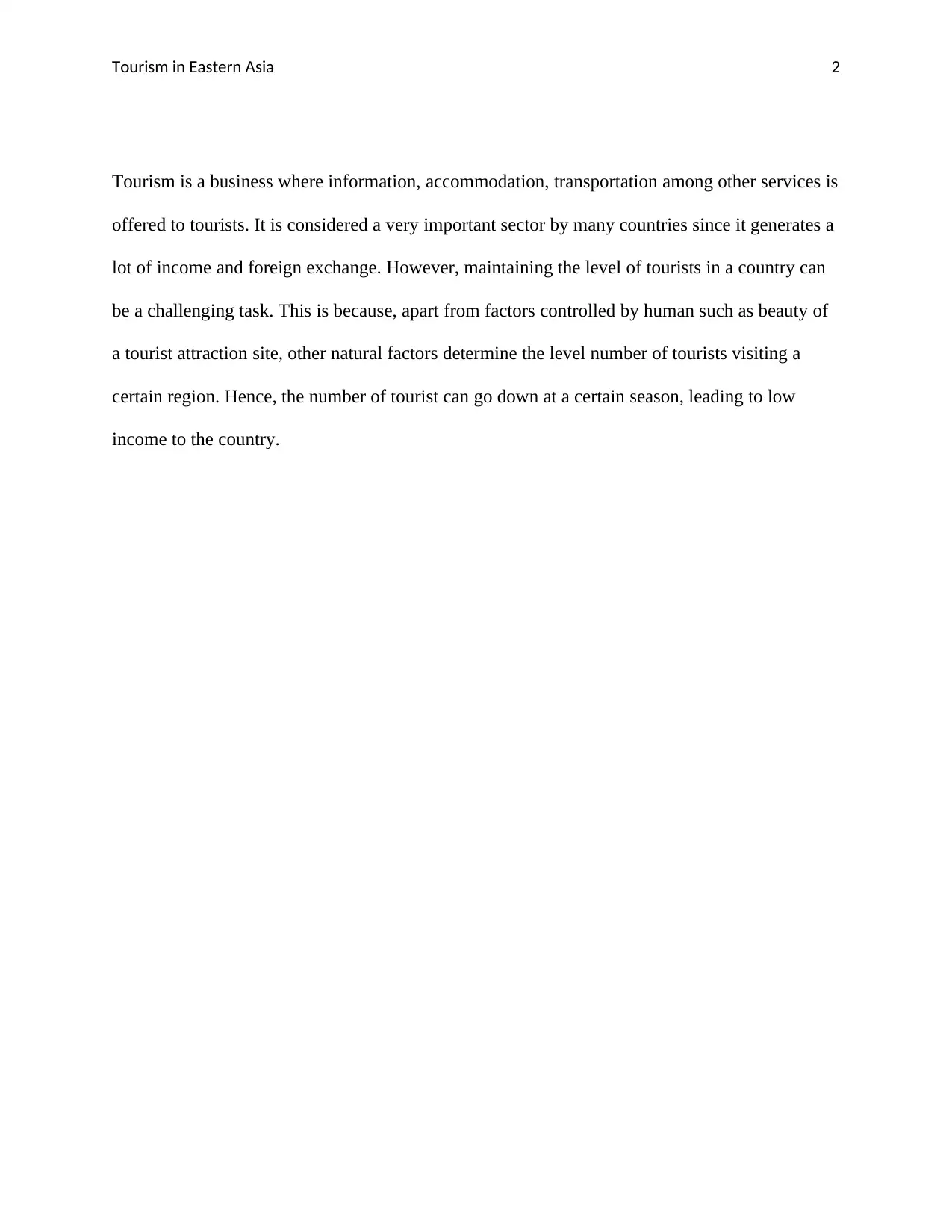
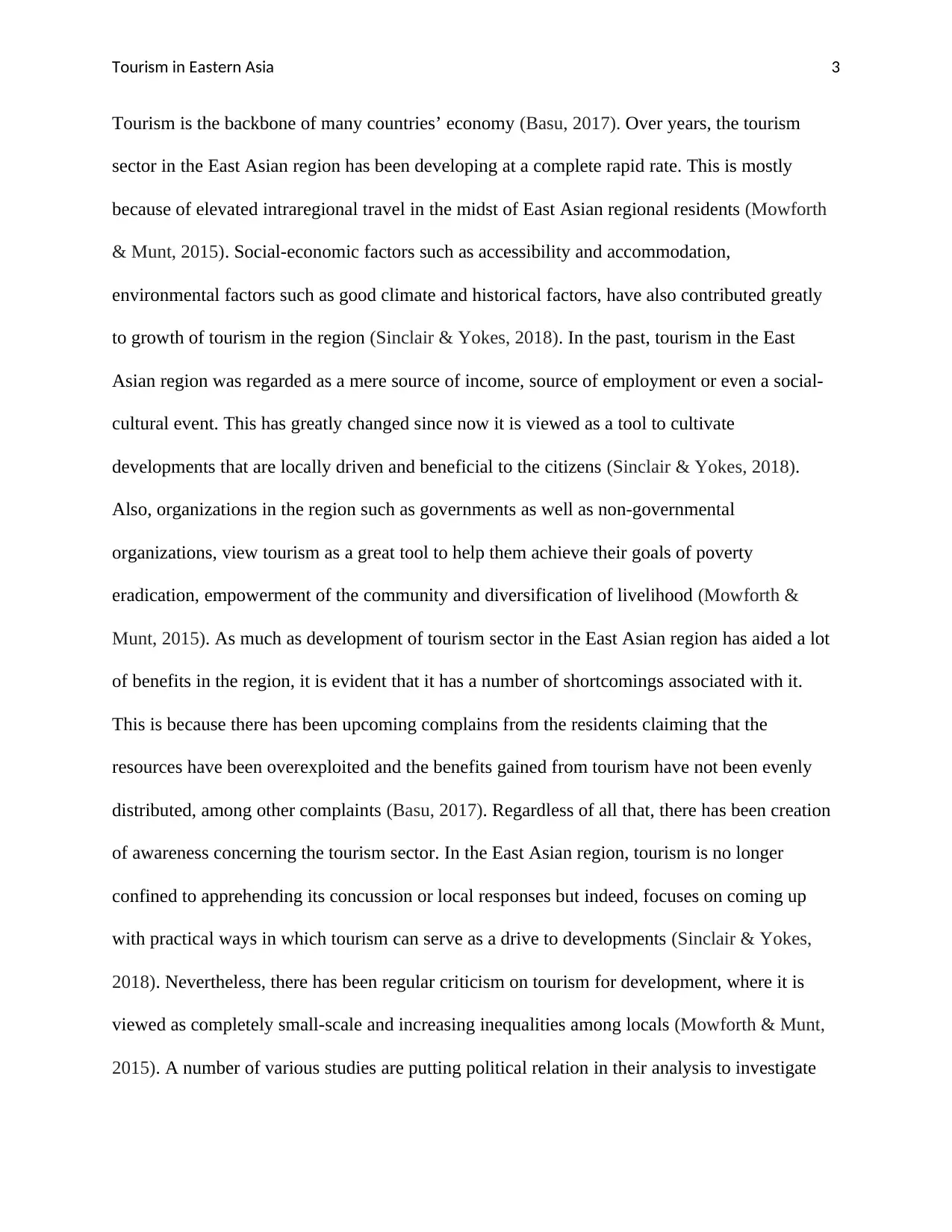

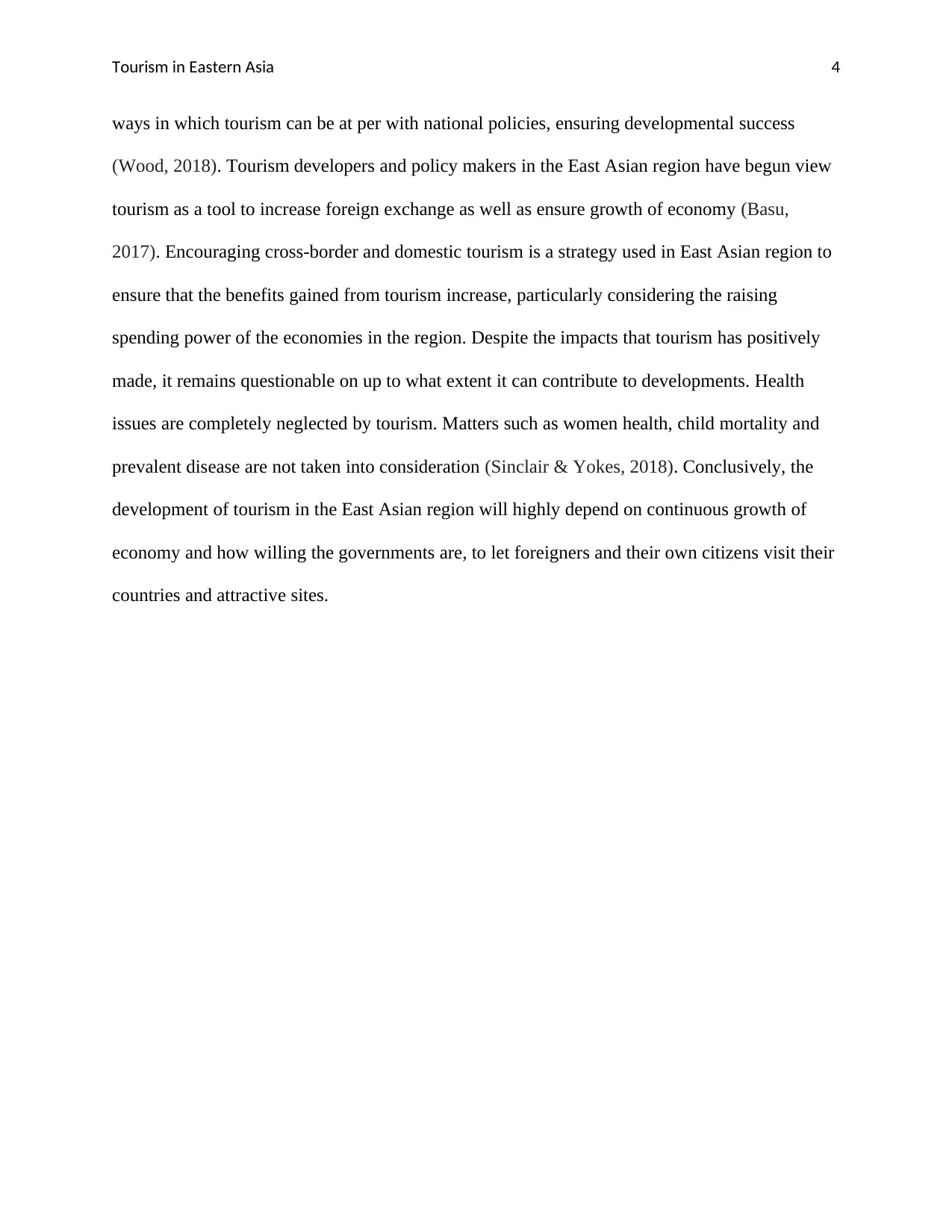
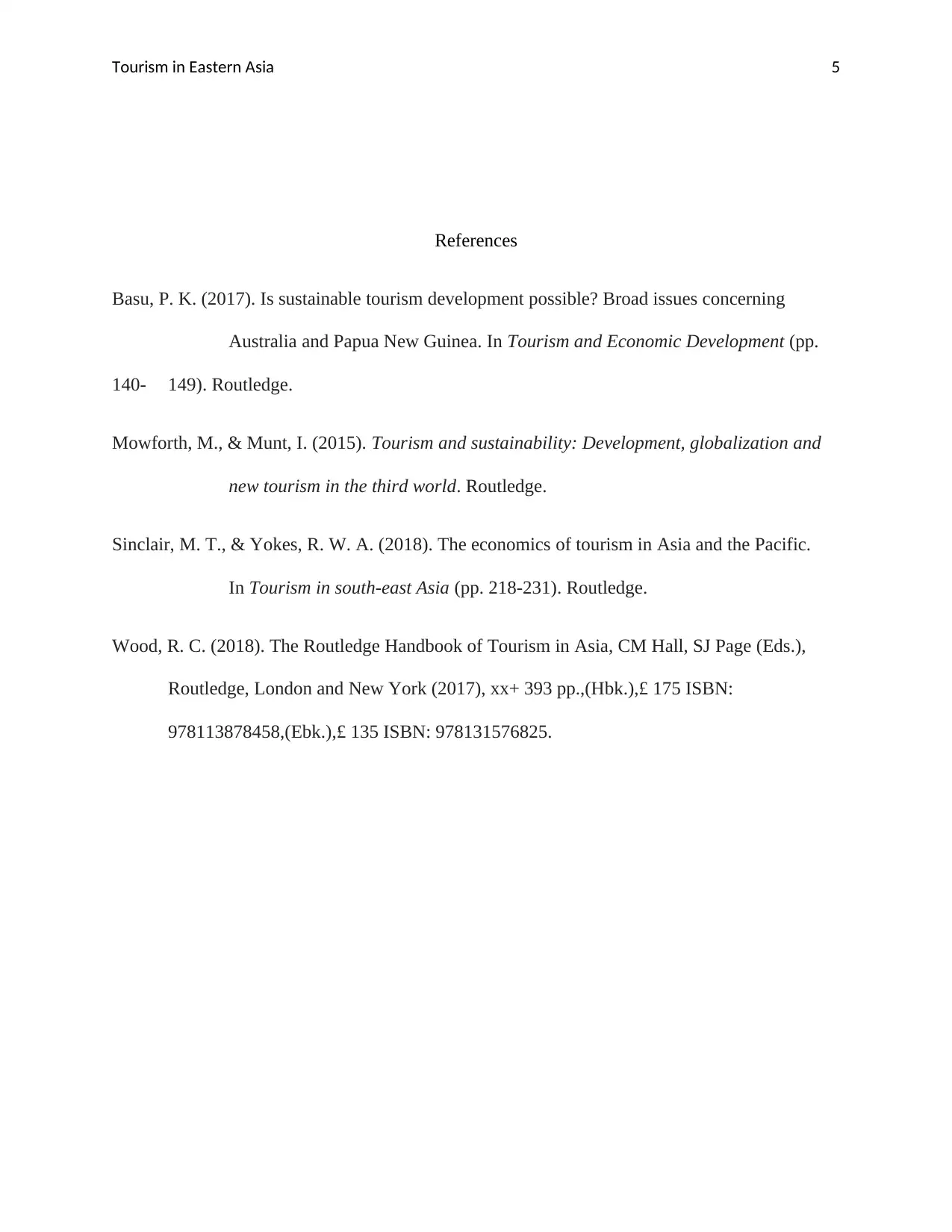






![[object Object]](/_next/static/media/star-bottom.7253800d.svg)